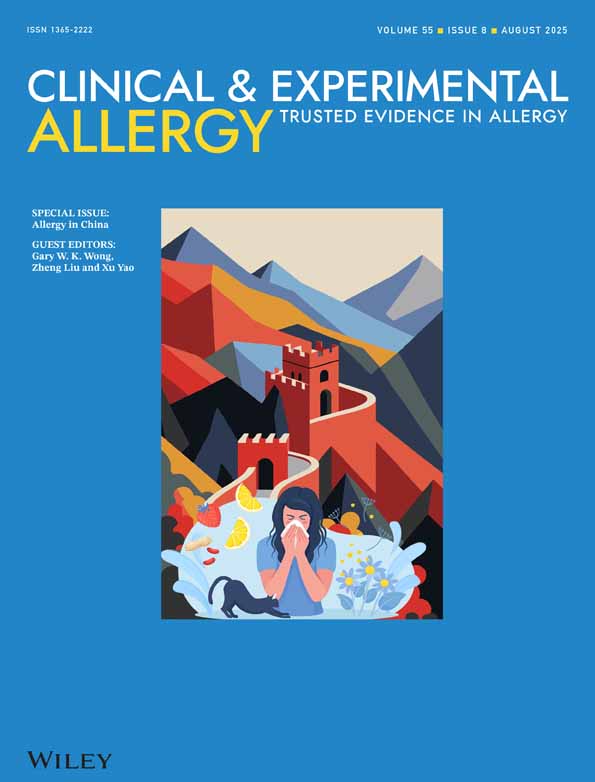Aspirin-induced asthma and HLA-DRB1 and HLA-DPB1 genotypes
Summary
Background Aspirin-induced asthma (AIA) affects one in 10 individuals with adult-onset asthma. It is not known if aspirin sensitivity is due to immune mechanisms or to interference with biochemical pathways.
Objective The study aimed to test for possible involvement of the genes of the Major Histocompatibility Complex (MHC) in AIA.
Methods HLA-DPB1 and HLA-DRB1 genotyping was carried out by DNA methods in 59 patients with positive challenge tests for AIA and in 48 normal and 57 asthmatic controls
Results The DPB 1*0301 frequency was increased in AIA patients when compared with normal controls (19.5% vs 5.2%, Odds Ratio = 4.4, 95% Confidence Interval (CI) 1.6–12.1, P= 0.002), and compared with asthmatic controls (4.4%, OR = 5.3, 95%CI= 1.9–14.4, P= 0.0001). The frequency of DPB 1*0401 in AIA subjects was decreased when compared with normal controls (28.8% vs 49.0%, OR = 0.42, 95%CI = 0.24–0.74, P= 0.003) and asthmatic controls (45.6%, OR = 0.48, 95%CI = 0.28–0.83, P= 0.008). The results remained significant when corrected for multiple comparisons. There were no significant HLA-DRB 1 associations with AIA.
Conclusion The presence of an HLA association suggests that immune recognition of an unknown antigen may be part of the aetiology of AIA.




